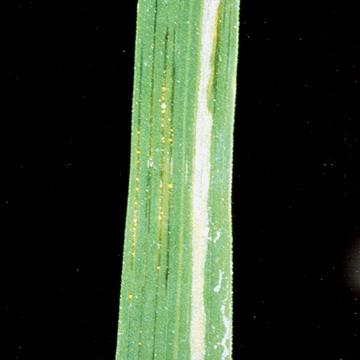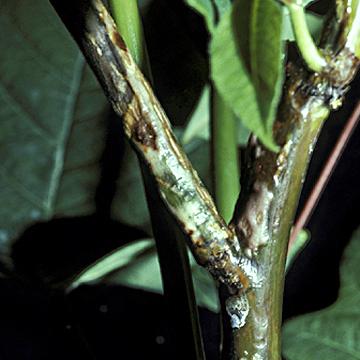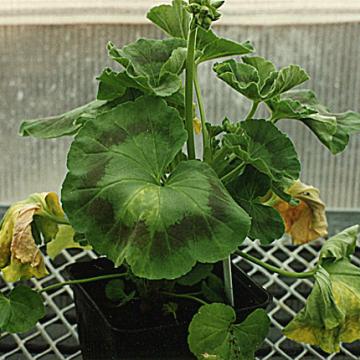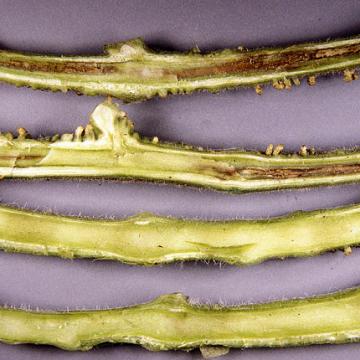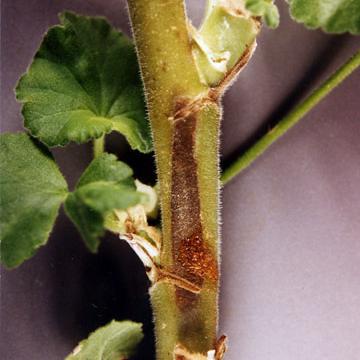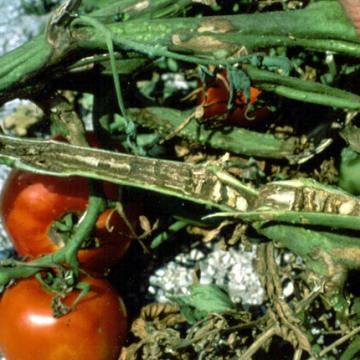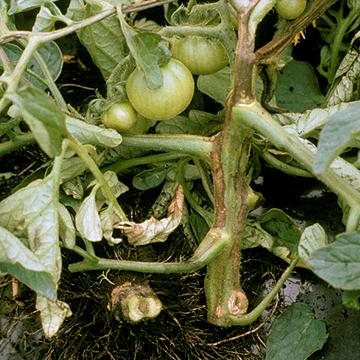DISEASE: Bacterial blight and bacterial leaf streak
HOST: Rice
Xanthomonas oryzae pv. oryzicola (bacterial leaf streak) causes water-soaked streaks with yellow ooze (left side), and X. oryzae pv. oryzae (bacterial blight) causes brown streaks that have turned white (right side).
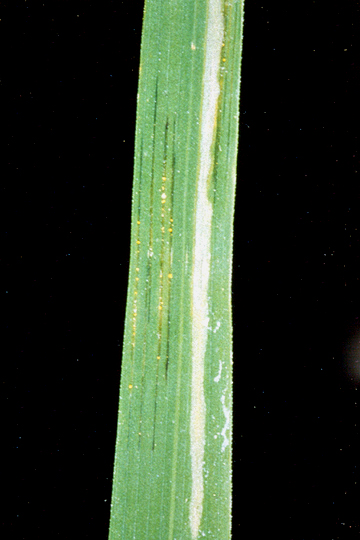
Bacterial blight and bacterial leaf streak | Rice
DISEASE: Bacterial blight and bacterial leaf streak
HOST: Rice (Oryza sativa)
PATHOGEN: Xanthomonas oryzae pv. oryzicola
PATHOGEN SYNONYM: Xanthomonas campestris pv. oryzae
SOURCE: T. Mew
DISEASE: Greasy center
HOST: Poinsettia
Stem with dark cankers and copious ooze. Necrotic areas are greasy in appearance and eventually turn light tan to brown with a papery texture as the cuticle becomes detached.
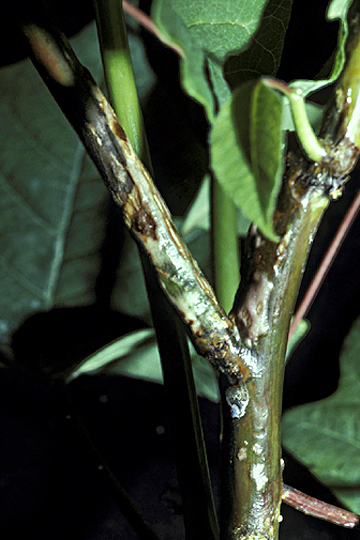
Greasy center | Poinsettia
DISEASE: Greasy center
HOST: Poinsettia (Euphorbia pulcherrima)
PATHOGEN: Pseudomonas viridiflava
SOURCE: R. Raabe
DISEASE: Pith necrosis
HOST: Geranium
Geranium with wilted, yellow necrotic leaves.
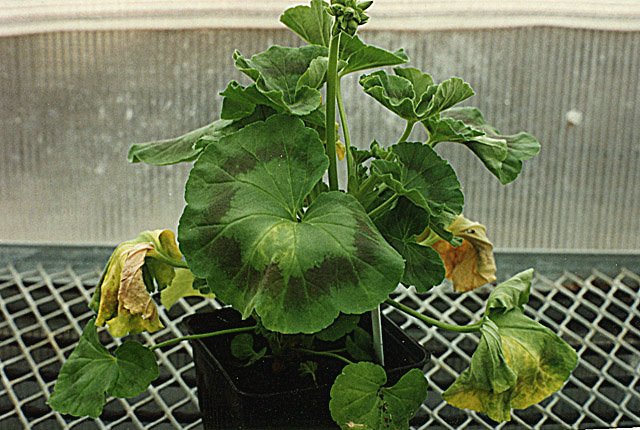
Pith necrosis | Geranium
DISEASE: Pith necrosis
HOST: Geranium (Pelargonium sp.)
PATHOGEN: Pseudomonas corrugata
SOURCE: A. Magyarosy, D. Thomas
DISEASE: Pith necrosis
HOST: Geranium
Pitted and hollow stems, one of the disease symptoms.
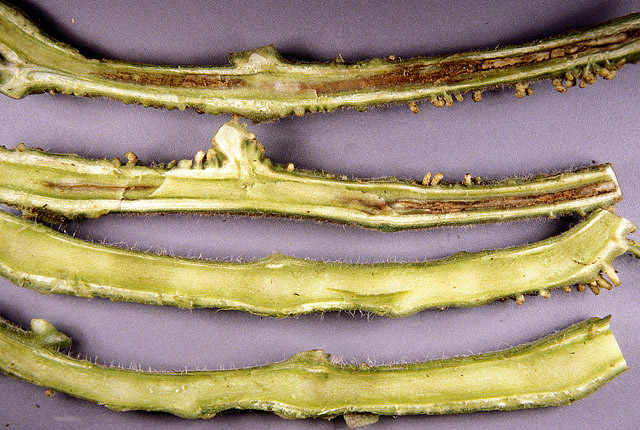
Pith necrosis | Geranium
DISEASE: Pith necrosis
HOST: Geranium (Pelargonium sp.)
PATHOGEN: Pseudomonas corrugata
SOURCE: A. Magyarosy, D. Thomas
DISEASE: Pith necrosis
HOST: Geranium
Discolored stem caused by systemic infection of the pathogen.
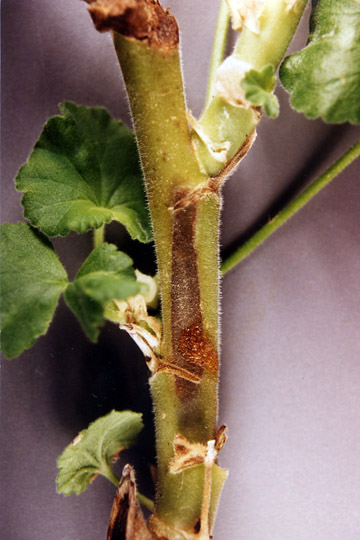
Pith necrosis | Geranium
DISEASE: Pith necrosis
HOST: Geranium (Pelargonium sp.)
PATHOGEN: Pseudomonas corrugata
SOURCE: A. Magyarosy, D. Thomas
DISEASE: Pith necrosis
HOST: Tomato
Cracked, dry, hollow stems with internal necrosis.
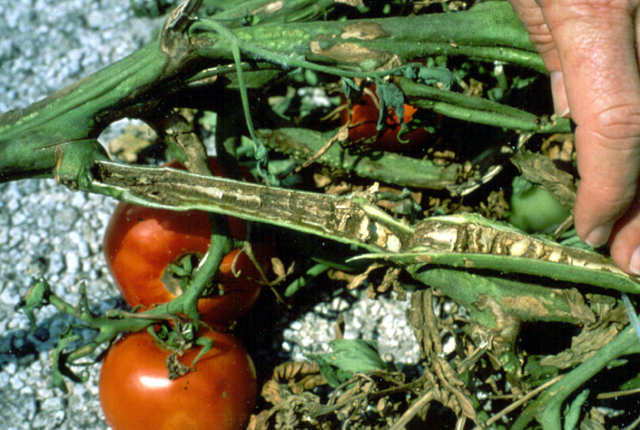
Pith necrosis | Tomato
DISEASE: Pith necrosis
HOST: Tomato (Lycopersicon esculentum)
PATHOGEN: Pseudomonas corrugata
SOURCE: A. Alvarez
DISEASE: Pith necrosis
HOST: Tomato
External necrotic stem tissues. Initial symptoms include chlorosis of young leaves. Wilting may occur when disease is severe.
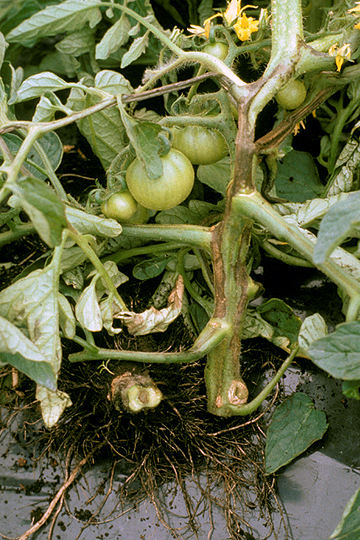
Pith necrosis | Tomato
DISEASE: Pith necrosis
HOST: Tomato (Lycopersicon esculentum)
PATHOGEN: Pseudomonas corrugata
SOURCE: K. Natsuaki, M. Goto


